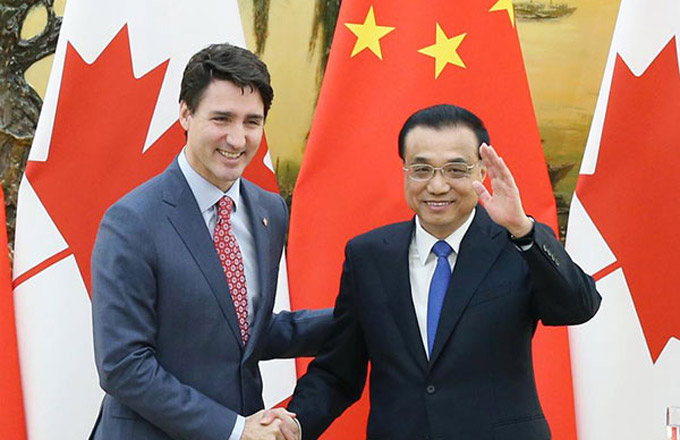Industry enters Qualcomm fray
Mobile phone chipmaker Qualcomm Inc may be facing tough headwinds in China after a telecommunications trade union submitted "substantial evidence" to the country's top economic planner in the midst of an antitrust probe.
Mobile Phone China Alliance (MPCA), comprising some 30 handset makers and telecommunications equipment providers, has submitted an investigative report to the National Development and Reform Commission (NDRC), calling Qualcomm's business model "detrimental to China's mobile phone industry".
Overcharging on patent fees and the bundling of services are two major accusations leveled at the world's largest chip manufacturer, according to the alliance's secretary-general, Wang Yanhui.
"What's happening to China's mobile phone industry now is like what happened to its DVD industry years back," Wang told China Central Television on Sunday. "Patent holders levied exorbitant licensing fees and grabbed the majority of profits."
Chinese mobile phone vendors have long been complaining that Qualcomm takes a tough stance in pricing negotiations, a move which forces many Chinese firms to constantly lower prices.
Will Stofega, program director with the International Data Corp's (IDC) mobile phones team, said pricing is a very sensitive issue in a market like China where "a lot of intellectual property is being developed".
Current market trends position Qualcomm well for a technological change over, but "taking a large base of customers up to 4G from 3G isn't cheap," Stofega said.
"Pricing is directly correlated to the amount of effort and the capabilities inherent in any of these critical technologies," Stofega said in an interview on Monday with China Daily.
Qualcomm's current business in China focuses on mobile phone chipset production and patent licensing.
Licensing has become a crucial revenue stream for Qualcomm, according to the MPCA report, which said it charges from 4 to 6 percent of the wholesale price of a handset.
The San Diego-based company has even established a subsidiary exclusively for charging patent fees, said Wang - with the MPCA - which he said "draws a thin line between proper licensing and monopolistic moves".
Qualcomm was put under antitrust scrutiny in November but the government agency has yet to disclose details of the investigation, citing the sensitivity of the issue.
Qualcomm representatives could not be reached for comment.
Fei Deng - an economist who heads the China Competition Economics practice at Edgeworth Economics LLC, a boutique economic consulting firm - said that if Qualcomm is found guilty it faces "a heavy fine from the NDRC."
"The wide media coverage, including the very recent CCTV coverage, might have created a negative presumption about Qualcomm," Deng said Monday in an e-mail to China Daily. "It is hard to say what the effect is over the long run, but this investigation has created another gloomy cloud over the international corporations doing business in China."
A Beijing-based lawyer who is providing legal advice on antitrust issues to Qualcomm said the investigation could last at least a year, because of the complexity of the case. The lawyer, who declined to be identified, urged the government to take into consideration the time and resources that the company has invested in its research and development process.
Under the anti-monopoly law, the NDRC can impose fines between 1 and 10 percent of a company's revenues for the previous year. However, the anti-monopoly law provision does not specify whether the 10 percent ceiling for fines applies to global or domestic sales.
Qualcomm reported $24.87 billion in revenue in the 12-month period ending Sept 29 - with $12.3 billion, or 49 percent, coming from its operations in China.
Heavyweight smartphone makers, from Apple Inc and Samsung Electronics Co to domestic players Lenovo Group Ltd and Yulong Computer Telecommunication Technology Co (the maker of Coolpad), all have adopted Qualcomm's telecommunications chipsets.
According to research firm Strategy Analytics, Qualcomm maintained a 53 percent share of the global market for smartphone processors in the second quarter of 2013.
The probe and the potential fine - which could end up totaling more than $1 billion - come as China gears up for the launch of high-speed fourth-generation LTE mobile communication networks.
Shipments of 4G-enabled smartphones are expected to top 500 million units in China by 2015, according to data collector Canalys.
Xu Zhen, a researcher for d1net, an information technology portal in Shanghai, said Qualcomm's current edge lies in its particularly strong adaptation in chips that communicate with both LTE and other older cellular technologies.
Contact the writers at [email protected], [email protected] and [email protected]


















